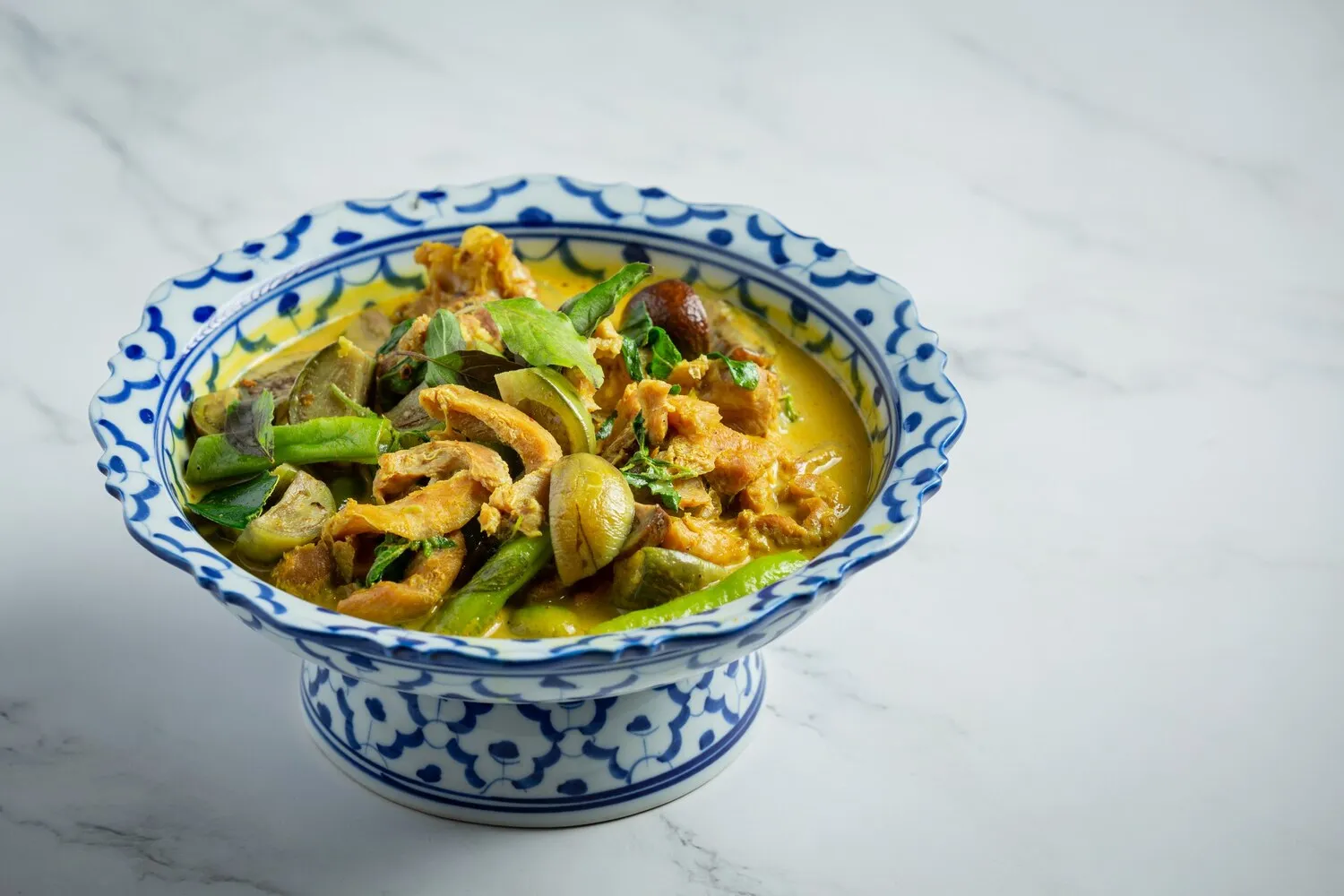
Red Curry
Thai red curry with coconut milk, bamboo shoots, bell peppers, and your choice of protein (chicken, beef, tofu, or shrimp).
Nutrition Facts
* The % Daily Value (DV) tells you how much a nutrient in a serving of food contributes to a daily diet. 2,000 calories a day is used for general nutrition advice.
Thai curry, including red curry, evolved from Indian curries through trade and cultural exchange. The introduction of chili peppers by Portuguese traders in the 16th century significantly influenced Thai cuisine, leading to the vibrant and spicy curries we know today. Coconut milk, readily available in Thailand, became a key ingredient, differentiating Thai curries from their Indian counterparts.
Red curry is a staple in Thai cuisine, reflecting the country's agricultural abundance and culinary creativity. It is often enjoyed as a family meal and is a popular offering in restaurants and street food stalls.
Social Gathering
Curries are often shared family style with rice at the center, fostering a sense of community and togetherness.
Temple Offerings
Certain curries are sometimes offered at temples as part of religious ceremonies, reflecting their importance in Thai culture.
Regional Variations
While red curry is common throughout Thailand, regional variations exist in terms of spice levels, ingredients, and preparation methods.
Red curry is characterized by a balance of spicy, savory, sweet, and creamy flavors.
The dominant flavor is spiciness, derived from dried red chili peppers. Savory notes come from ingredients like fish sauce, shrimp paste, and garlic. Palm sugar contributes sweetness, while coconut milk provides richness and creaminess. The choice of protein (chicken, beef, tofu, or shrimp) adds its own distinctive taste and texture. Bamboo shoots offer a slightly bitter and crunchy counterpoint, and bell peppers contribute a subtle sweetness and visual appeal.
Spice Level Adjustment
Adjust the amount of red curry paste to control the spiciness of the dish. Start with a smaller amount and add more to taste.
Coconut Milk Quality
Use high-quality coconut milk for the best flavor and texture. Full-fat coconut milk is recommended for a richer curry.
Proper Cooking Technique
Sauté the curry paste in oil until fragrant to release its flavors before adding the coconut milk and other ingredients. Simmer gently to allow the flavors to meld together.
Fresh Ingredients
Using fresh ingredients, such as lemongrass, galangal, and kaffir lime leaves (if available), will enhance the overall flavor profile.
Explore additional Thai Curry dishes and restaurants
Explore Thai CurryDiscover top dining spots and culinary experiences in Antwerpen.
Explore AntwerpenLearn more about the food culture, restaurant scene, and culinary heritage of Belgium.
Explore Belgium